
Hagia Triada Sarcophagus. Early Bronze Age. Limestone. Detail of one
The Hagia Triada sarcophagus is a Late Bronze Age (1400 BCE) 137 cm-long limestone sarcophagus covered in plaster and painted in fresco and combining features of Minoan and Mycenaean style. The painted frieze shows all the stages of the sacred ceremony which was performed at the burial of important personages.

» Hagia Triada sarcophagus
The sarcophagus of Agia Triada in the Archaeological Museum of Herakleion dates back to the late palace period of the Minoan culture (1600-1450 B.C.). It shows a Minoan funerary ritual. Now in Heraklion Archaeological Museum, no. Λ396 . Media in category "Sarcophagus of Agia Triada" The following 90 files are in this category, out of 90 total.
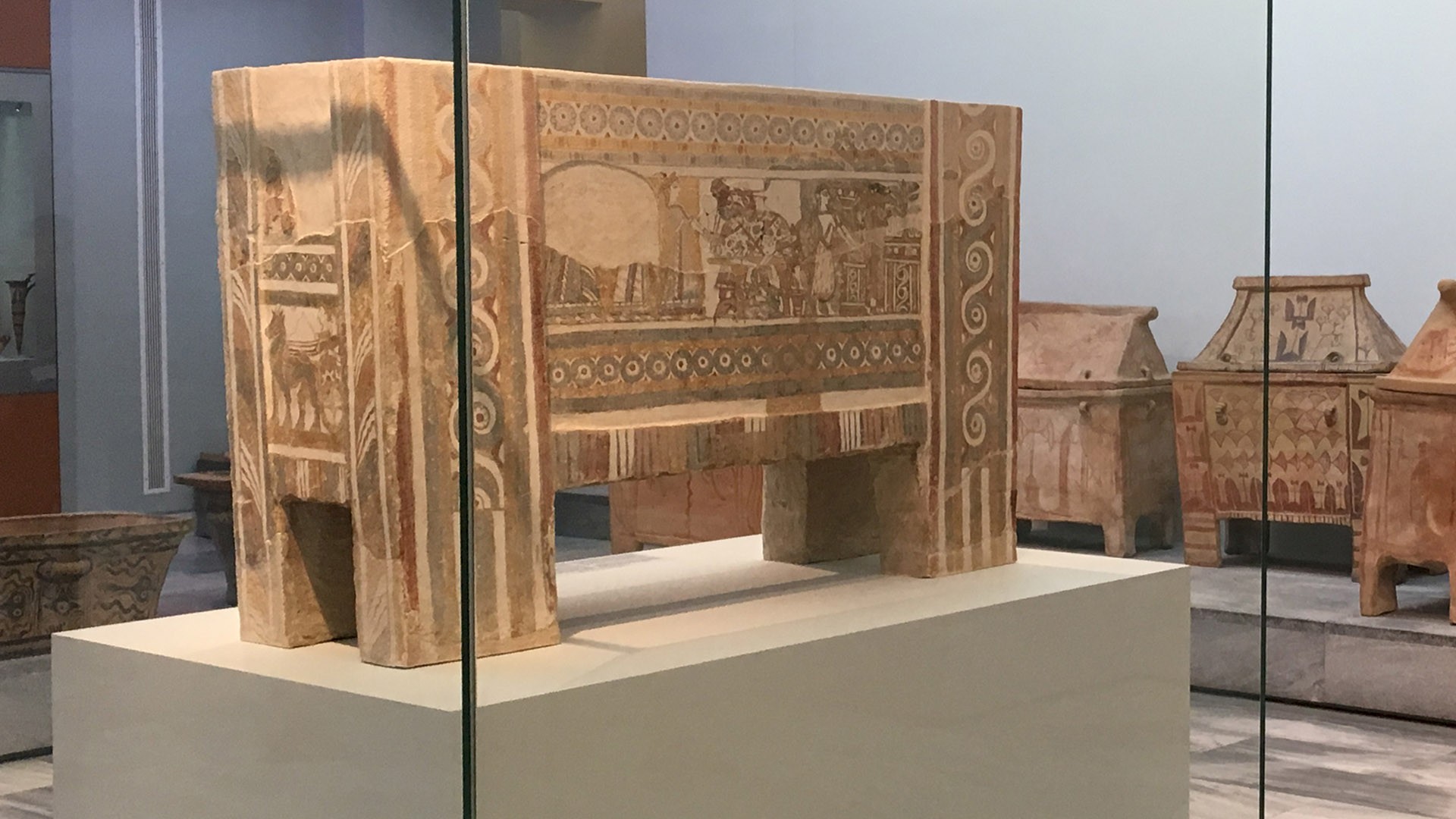
The Agia Triada sarcophagus Ancient World Magazine
Hagia Triada, also known as Agia Triada, is the archaeological site of an ancient Minoan settlement located on the western end of a prominent coastal ridge on the island of Crete. The ancient site, and the surrounding area, remains one of the most remarkable in the entire Mediterranean area.

The Hagia Triada Sarcophagus in the Archaeological Museum of Heraklion
Download Full Size Image. The Byzantine single-aisled chapel of Agios Georgios lying over the remains of a Minoan villa at the Hagia Triada archaeological site in southern Crete. The church was built during the Venetian period at the beginning of the 14th century CE and is decorated with beautiful frescoes. Remove Ads. Advertisement.
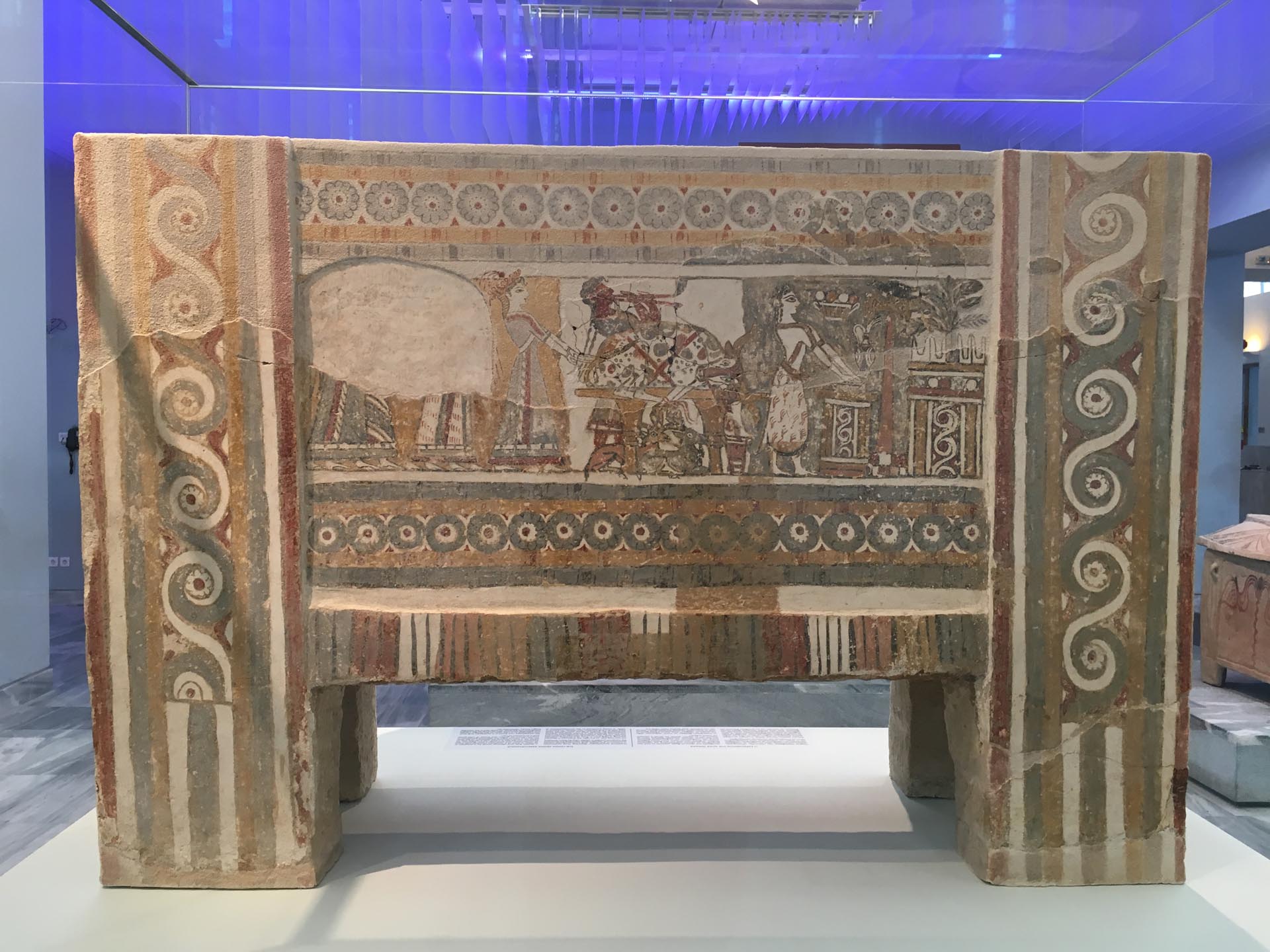
The Agia Triada sarcophagus Ancient World Magazine
The Hagia Triada Sarcophagus: A One-of-a-Kind Minoan Discovery The Hagia Triada Sarcophagus was first discovered in the early 20th century during an excavation of a local chamber tomb. Experts determined that this sarcophagus is likely from the 14th century BC, sometime between 1370 and 1320 BC.
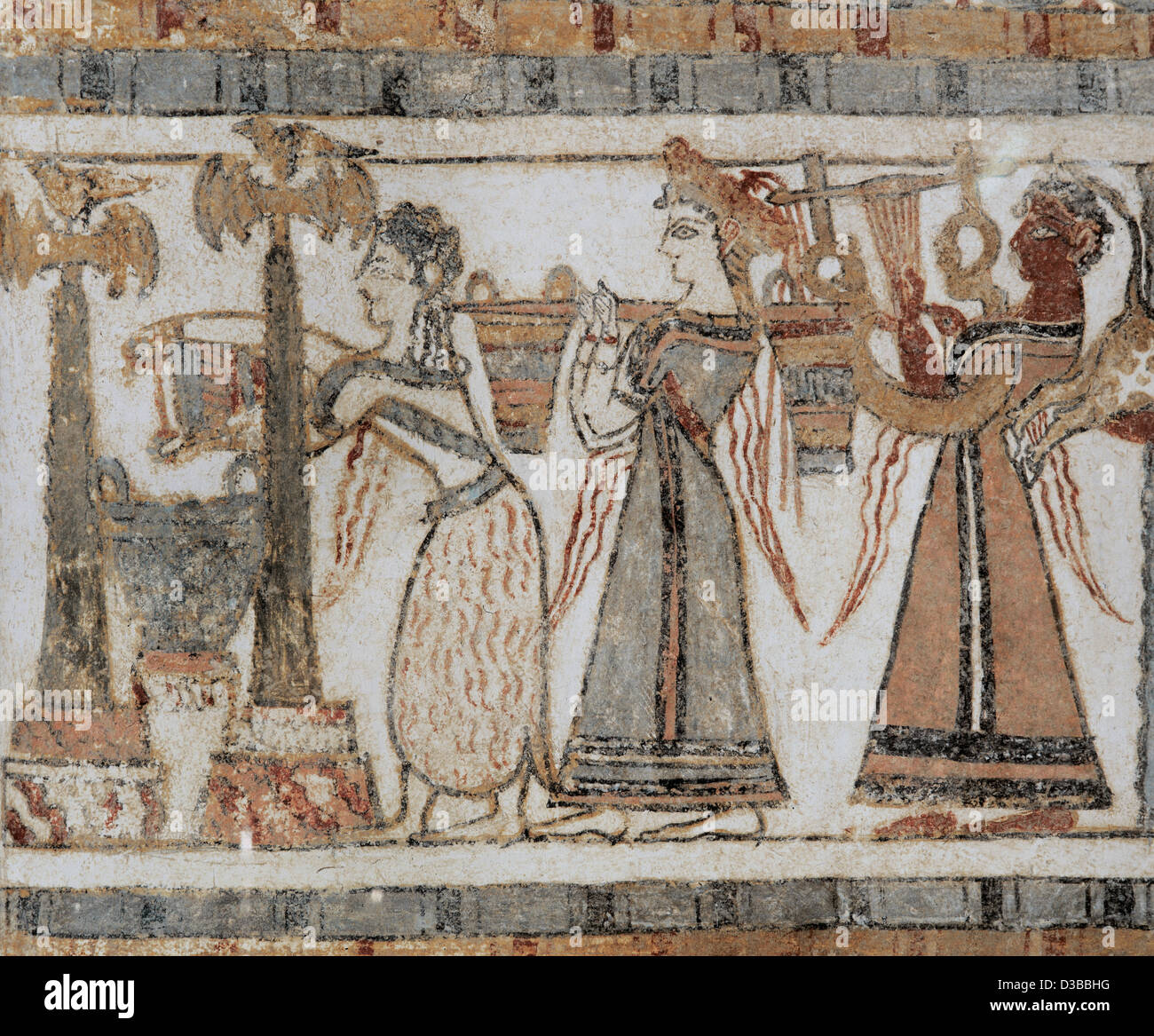
Minoan Art. Crete. The Hagia Triada Sarcophagus. Painted with scenes
ArchaiOptix, . (2021, September 02). Minoan Religious Procession on Hagia Triada Sarcophagus . World History Encyclopedia. Retrieved from https://www.worldhistory.org/image/14552/minoan-religious-procession-on-hagia-triada-sarcop/ Chicago Style ArchaiOptix, . " Minoan Religious Procession on Hagia Triada Sarcophagus ." World History Encyclopedia.

The painted Minoan Hagia Triada Sarcophagus 13701300 BC. Heraklion
The Hagia Triada sarcophagus is the only Minoan sarcophagus known to be entirely painted. It was created using fresco, like contemporaneous wall painting, and illustrates a complex narrative scene, apparently of burial and sacrifice. The object itself is substantial, measuring 1.375 meters (about 4.5 feet) long, .45 meters (about 1.5 feet) wide.
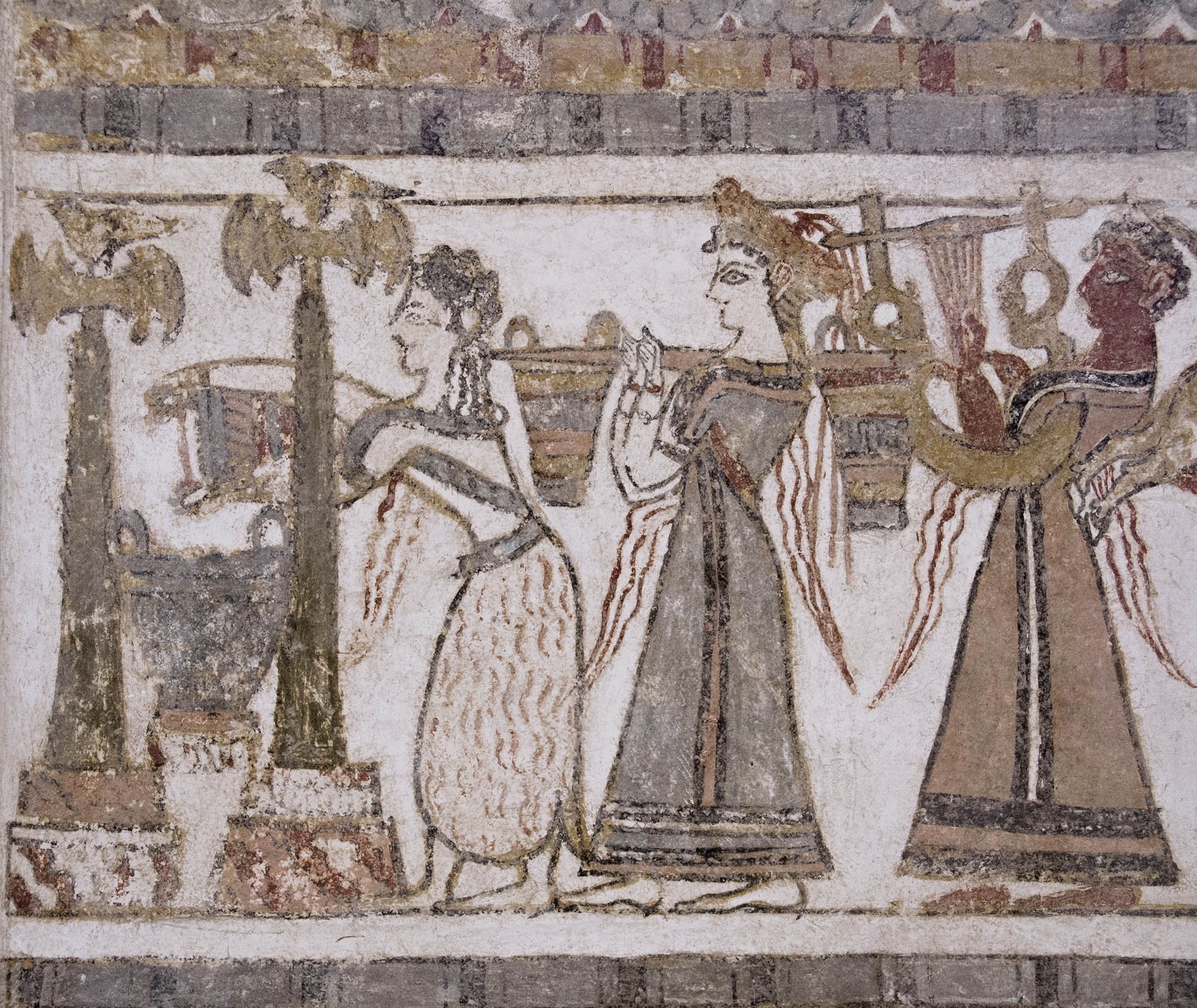
» Hagia Triada sarcophagus
From Agia Triada comes a remarkable limestone sacrophagus with figurative scenes that may shed light on the nature of Bronze Age religion. Josho Brouwers 15 October 2019 Josho Brouwers From tomb 4, a well-built chamber tomb located to the northeast of the Minoan "villa" at Agia Triada, comes a remarkable limestone sarcophagus.

The painted Minoan Hagia Triada Sarcophagus 13701300 BC. Heraklion
Since its discovery in 1903 the Hagia Triada sarcophagus has remained potentially the most articulate source for our understanding of the religion of Late Minoan Crete. 1 The iconography of the sarcophagus has always held the greatest attraction for scholars, who agree that some sort of ritual is portrayed; whether this ritual is specifically funerary or a part of some nonfunerary, divine cult.

The Hagia Triada Sarcophagus, 13501300 BC. Archaeological Museum
Hagia Triada Sarcophagus. The Hagia Triada sarcophagus is a Late Bronze Age (1400 BCE) 137. Image . Minoan Religious Procession on Hagia Triada Sarcophagus. Minoan limestone sarcophagus, c. 1400 BCE. Heraklion Archaeological. Image . Harvester Vase.

The Hagia Triada Sarcophagus in the Archaeological Museum of Stock
The Agia Triada sarcophagus This unique sarcophagus was found in Agia Triada, inside a grave containing the inhumation of a prince. It is covered in plaster and painted in fresco with scenes of great importance for our understanding of funerary customs during the Mycenaean occupation of Crete.
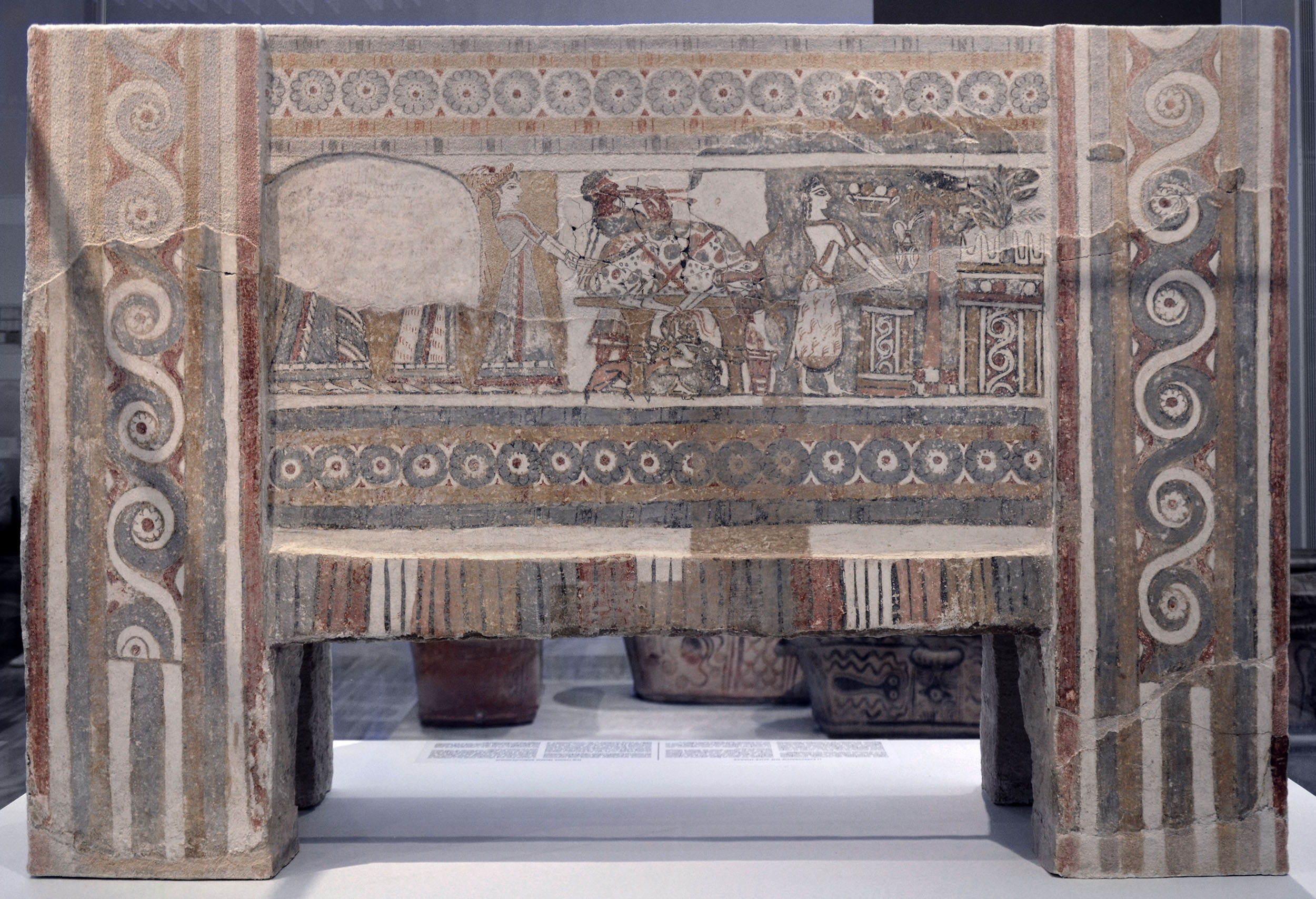
» Hagia Triada sarcophagus
Hagia Triada Sarcophagus
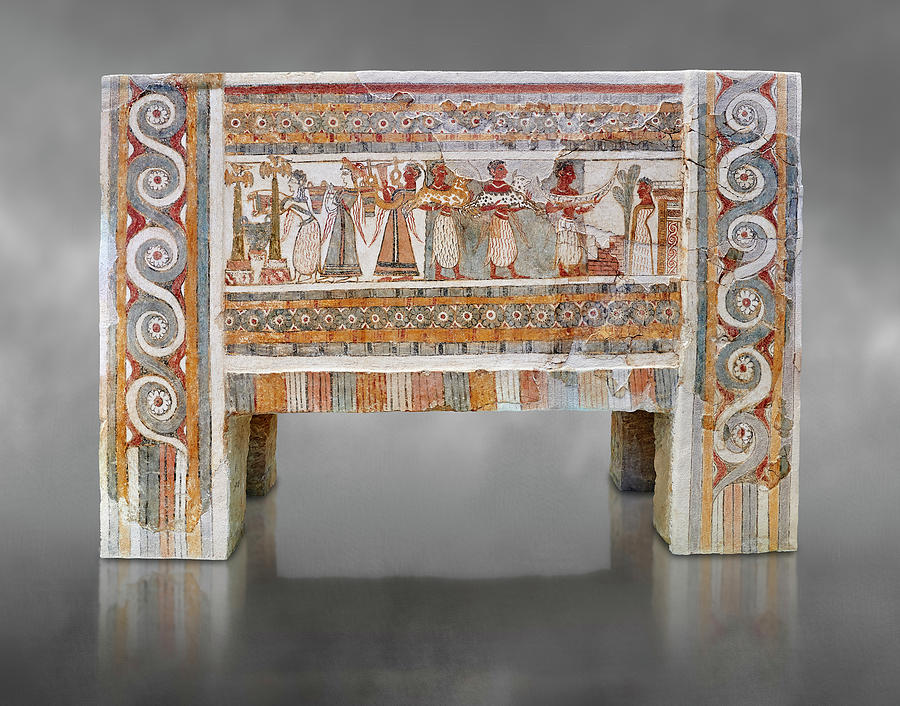
The Minoan Hagia Triada Sarcophagus 13701300 BC Heraklion
The Hagia Triada sarcophagus is the only Minoan sarcophagus known to be entirely painted. It was created using fresco, like contemporaneous wall painting, and illustrates a complex narrative scene, apparently of burial and sacrifice. The object itself is substantial, measuring 1.375 meters (about 4.5 feet) long, .45 meters (about 1.5 feet) wide.

The Hagia Triada sarcophagus in the Heraklion Archaeological Museum in
The Hagia Triada Sarcophagus, a painted limestone larnax, has been an enigma in the Minoan artistic canon since the time of its discovery in 1903. It is the only larnax found to date made of limestone, and the only one to contain a series of narrative scenes of Minoan funerary rituals. Conversely, most contemporaneous Aegean larnake are decorated with randomly arranged abstract designs and.
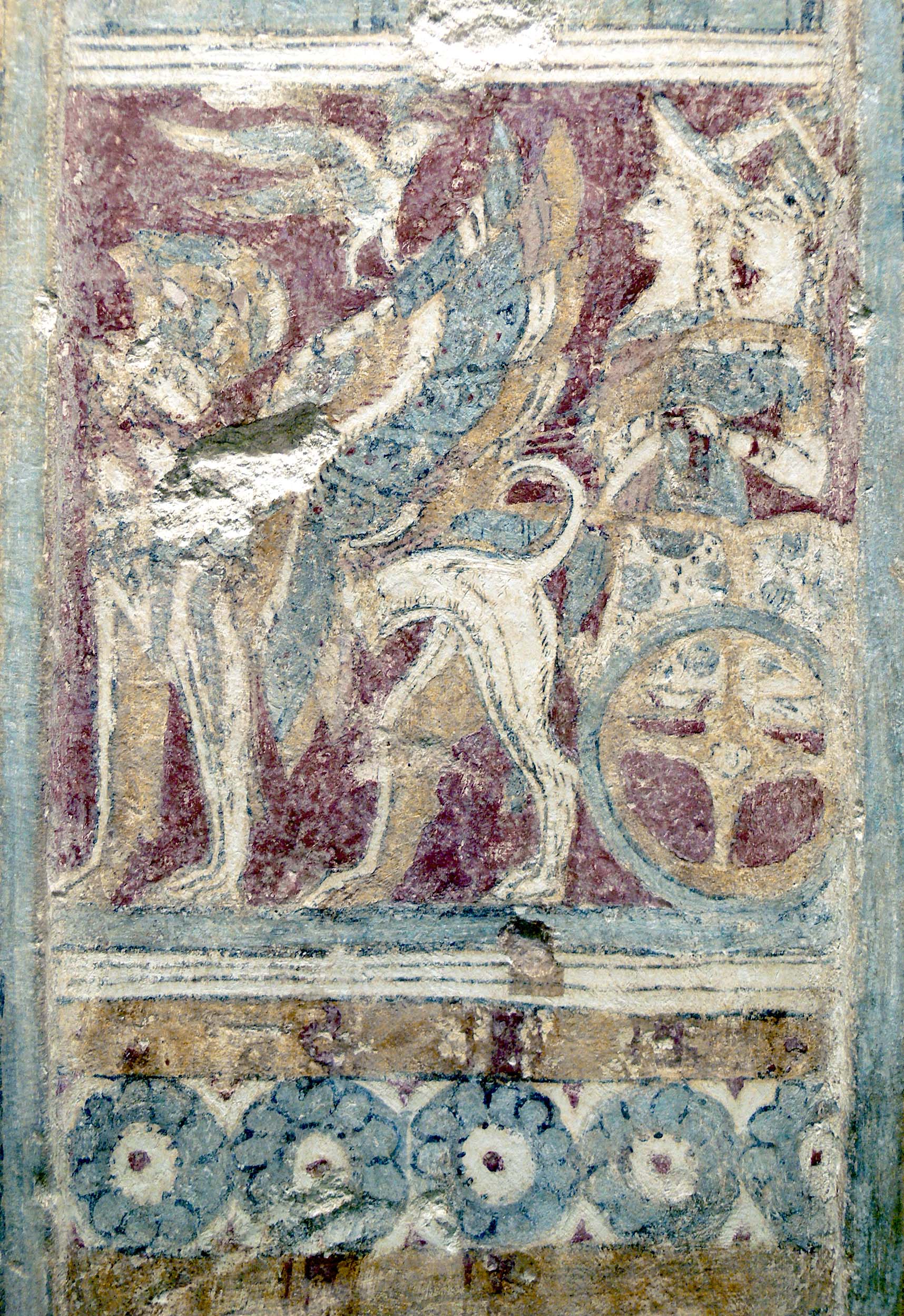
» Hagia Triada sarcophagus
The Hagia Triada Sarcophagus This masterpiece is a unique stone chest sarcophagus which was discovered in a funerary building near the Villa of Hagia Triada by Italian archaeologist Roberto Paribeni in 1903. The outer surface is covered with a thin coat of plaster and painted in the fresco technique.
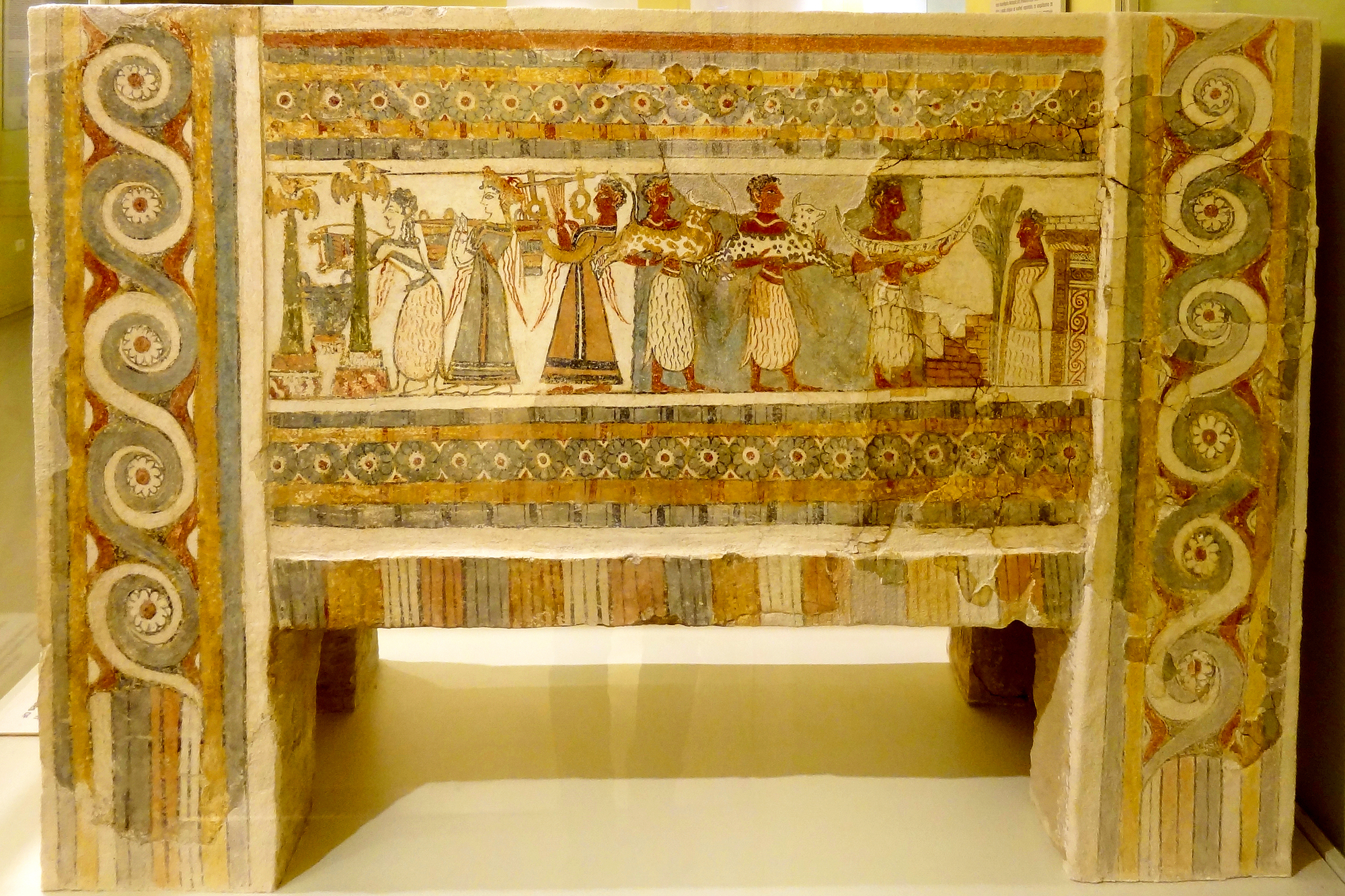
Hagia Triada Sarcophagus (Heraklion Archaeological Museum) (3
The Hagia Triada sarcophagus is the only Minoan sarcophagus known to be entirely painted. It was created using fresco, like contemporaneous wall painting, and illustrates a complex narrative scene, apparently of burial and sacrifice.